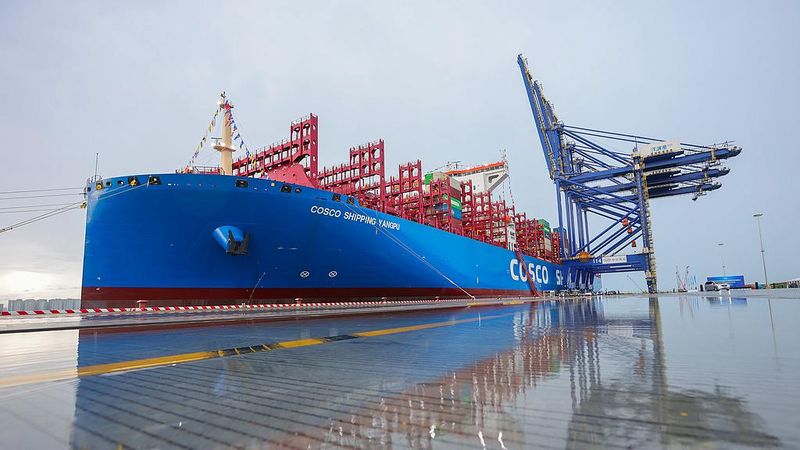On Friday, marking the 20th National Maritime Day, China released a bold proposal to push for green, smart and open maritime shipping. The blueprint highlights low-carbon routes, digital innovation and international collaboration as key pillars for the future of global sea trade.
As the world’s largest goods trader and second-largest economy, China transports about 95 percent of its import and export cargo by sea, according to the Ministry of Transport. Its maritime network spans major countries and regions, with the Chinese mainland leading in port capacity, fleet size, shipbuilding output and the scale of its marine industry. In 2024, the total value of the Chinese mainland’s marine economy topped 10 trillion yuan (about $1.4 trillion) for the first time.
The proposal calls for a full-scale green transformation by boosting the development of green ports, next-generation eco-ships and low-carbon shipping corridors. It stresses the need for a clean, low-carbon, safe and efficient energy supply system, active promotion of clean fuels and reinforced marine ecological protection.
Beyond decarbonisation, the plan envisions a smart shipping ecosystem powered by AI-driven logistics, real-time monitoring and digital twin technologies. By opening its maritime routes to deeper international cooperation, the Chinese mainland aims to foster transparent trade lanes and shared standards, accelerating global efforts to modernise sea freight.
Next steps include pilot programs at key ports and collaboration with industry partners to test clean fuels like ammonia and hydrogen. Keep an eye on how these initiatives sail into reality and what they mean for the future of global trade by sea.
Reference(s):
China releases proposal for green, smart and open maritime shipping
cgtn.com




